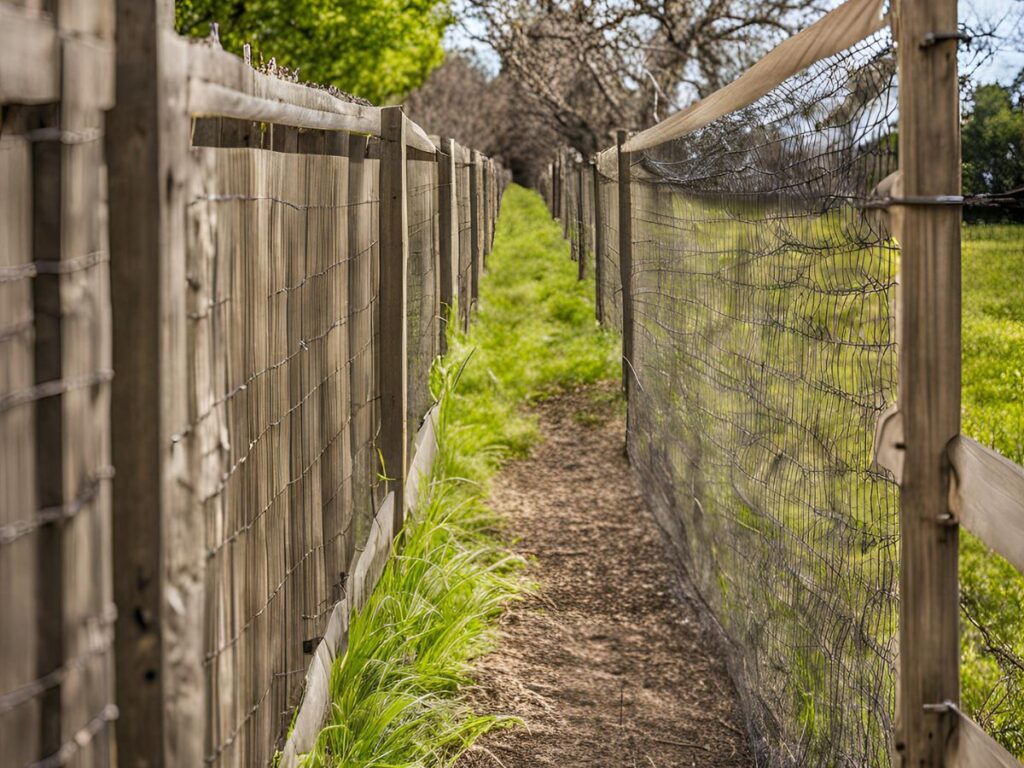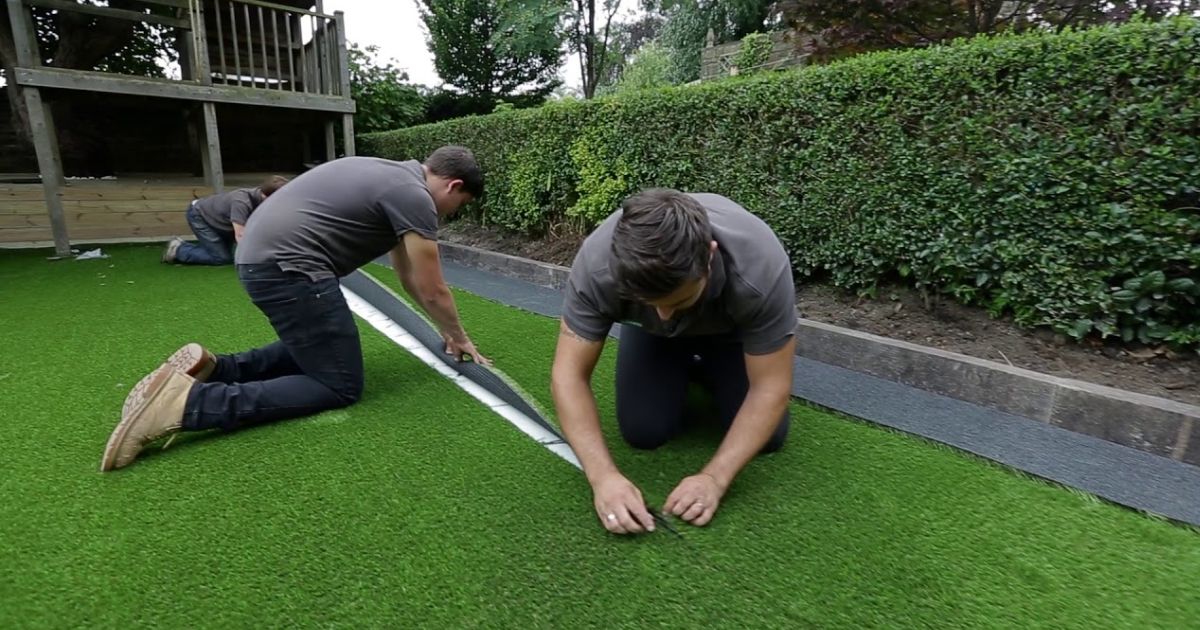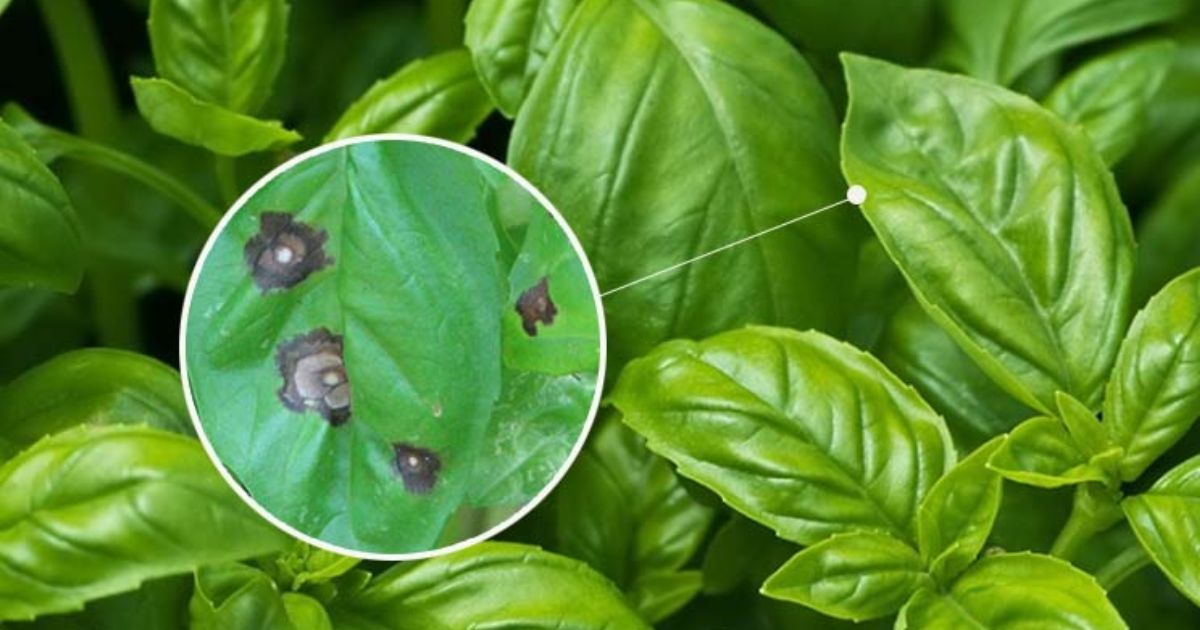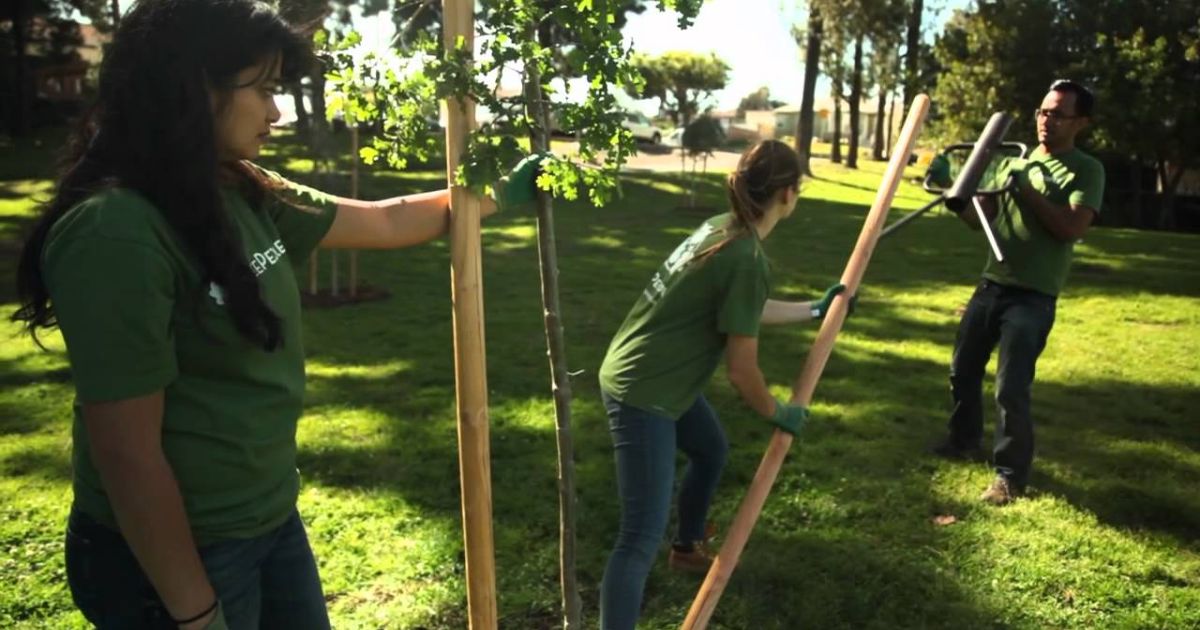One of gardeners’ most significant challenges when maintaining a thriving garden is protecting their plants from pests. Whether critters like rabbits and squirrels, the destructive presence of caterpillars, or the constant foraging of birds, these unwelcome visitors can wreak havoc on your hard work. One of the most effective and sustainable ways to safeguard your garden is by choosing the right fences to keep out critters, caterpillars, and birds.
But with so many fencing options available, it can be overwhelming to know where to start. Several factors must be considered, from materials to height and style, to guarantee that your fencing offers maximum protection without detracting from your garden’s aesthetic. In this guide, we’ll walk you through how to choose fences to keep out critters, caterpillars, and birds for your garden, helping you find the ideal way to safeguard your plants and preserve the beauty of your outdoor space.
Why You Need Fences for Your Garden
Keeping pests out of your yard is essential to ensuring healthy, thriving plants. Critters like rabbits, squirrels, small animals, caterpillars, and birds can quickly become a gardener’s worst nightmare. These creatures are often attracted to your garden because it provides a bountiful supply of fresh, nutritious plants. Rabbits and squirrels may nibble on tender seedlings or mature vegetables, while caterpillars can strip plants of their foliage, rendering them feeble and exposed. Birds, on the other hand, may peck at fruits or seedlings, causing irreparable damage. The longer these pests are unchecked, the more havoc they can wreak on your garden’s growth and productivity.
The consequences of pest damage are significant and far-reaching. Beyond the immediate harm to your plants, pests can affect your garden’s health and aesthetics. When damaged, plants often fail to thrive or produce fruits and flowers, resulting in a diminished harvest. A garden constantly under siege from pests also loses appeal, as chewed leaves and wilted plants can create an unsightly environment. This can be disheartening for gardeners who invest time and effort into cultivating their space.
One of the most effective ways to combat these problems is by installing fences to keep critters, caterpillars, and birds out. Fences offer a long-term, sustainable solution that doesn’t rely on harmful chemicals or pesticides. Unlike traps or repellents, fences are a permanent barrier that protects your fencing for a garden to keep animals out from pests. They prevent damage to your plants and preserve the integrity of your fenced in garden ecosystem by keeping animals out without causing them harm. Choosing the right fence can safeguard your garden’s beauty and productivity year-round, ensuring your plants have the best chance to grow and flourish.
Types of Fences to Keep Out Critters, Caterpillars, and Birds
When choosing the right fence for your garden, it’s essential to consider the specific pests you’re trying to keep out. Different fences address the unique challenges of critters, caterpillars, and birds. Here’s a breakdown of the most effective fence types for each:
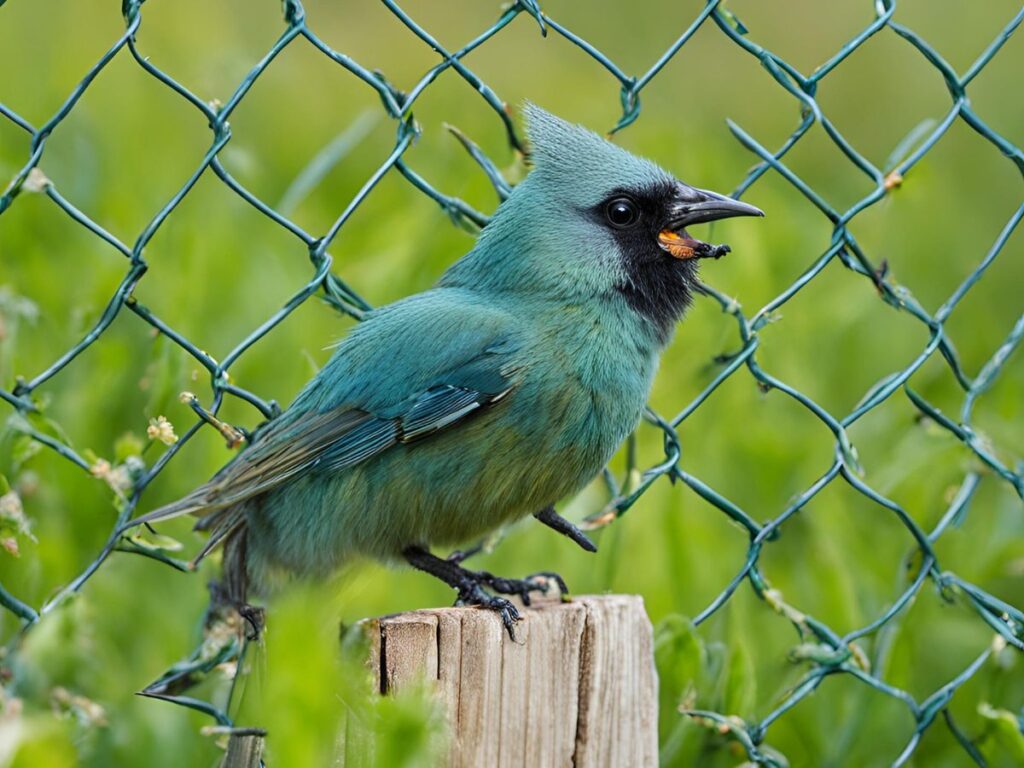
Critter-Proof Fences
Critters like rabbits, squirrels, and other small animals can be particularly tricky to keep out, as they are skilled at squeezing through gaps and burrowing underneath fences. The best defense against these pests is a sturdy, critter-proof fence made from wire mesh, chicken wire, or hardware cloth. These materials are durable and tightly woven, making it difficult for small animals to gnaw through or slip through gaps.
Key Features:
- Low-to-the-ground design: Critters often attempt to dig under fences, so burying the bottom of the wall a few inches underground is essential to prevent burrowing.
- Small openings: Use fencing with small mesh sizes to ensure that animals cannot fit through. This is particularly important for smaller critters, such as rabbits, who can squeeze through surprisingly narrow spaces.
Height Considerations:
- Typically, a fence that is three to four feet high sufficient to keep out smaller animals like rabbits and squirrels, who are not known to jump over tall barriers. However, ensure the fence is adequately secured at the base to prevent burrowing.
Caterpillar-Resistant Fences
Caterpillars can be a significant nuisance for fenced in garden. They consume plant leaves, which frequently results in extensive damage. Caterpillar-resistant fences made from fine mesh or netting are ideal for protecting plants from these pests. These materials allow air and sunlight to pass through, ensuring plants get nutrients while avoiding harmful insects.
Key Features:
- Fine mesh: The mesh should be fine enough to block caterpillars and other insects from accessing your plants but still porous enough to let sunlight and air flow freely.
- Placement: Caterpillar-resistant fences should be placed around vulnerable plants or flower beds, especially those with tender leaves or flowers that caterpillars are attracted to. These fences can also create a barrier around your entire garden if necessary.
Bird-Deterring Fences
Birds are notorious for feasting on fruit, seeds, and seedlings, often damaging plants. Bird-deterring fences are designed to keep these flying pests at bay and are typically made from netting or mesh with small openings that prevent birds from squeezing through. These fences are beneficial for keeping larger birds like crows and pigeons from invading your garden.
Key Features:
- Smaller mesh openings: The mesh or netting should have small openings that are small enough to keep birds from getting through but large enough to allow air and light to pass.
Height Considerations:
- You’ll need a fence at least 6-8 feet tall for larger birds. Taller fences are necessary because birds can quickly fly over shorter barriers, even those as high as 3 or 4 feet.
Add-ons:
- To enhance the effectiveness of your bird-deterring fence, consider adding bird spikes along the top of the wall. These spikes can prevent birds from landing or roosting on the wall.
- Visual deterrents, like plastic or shiny tape owl decoys, can also be added to the fence to make it less appealing to birds.
By selecting the correct type of fence for each pest, you can protect your garden from various threats and create an environment where your plants can grow freely and undisturbed. Whether dealing with critters, caterpillars, or birds, the right fence will provide long-lasting protection and peace of mind.
Choosing the Right Fence Material
Choosing the right fence material is critical when safeguarding your garden from critters, caterpillars, and birds. The selected material should offer reliable protection against unwanted pests while complementing your fenced in garden aesthetic and functional needs. These are a few of the most widely used fence materials along with their advantages and drawbacks to assist you in making a well-informed choice. what fruit can boost wetness?
Wooden Fences
Wooden fences are often chosen for their aesthetic appeal, adding a natural and rustic charm to any garden. They can be customized in various heights and designs to suit your taste. However, while wooden fences look beautiful, they may not be the best choice for keeping out smaller critters, especially burrowing animals like rabbits and squirrels. These animals are adept at digging and can easily tunnel under wooden fences, bypassing the barrier and damaging your plants.
Pros:
- Aesthetic appeal: Wooden fences create a warm, natural look that blends well with the environment.
- Customization: Available in different styles and sizes, you can tailor the fence to your garden’s needs.
Cons:
- Ineffective for burrowing animals: Animals like rabbits can dig under the fence, making it an unreliable barrier.
- Maintenance: Wooden fences require regular upkeep to prevent rot, warping, or insect damage.
Metal Fences
Metal fences, including wire mesh, hardware cloth, and chain link, are highly durable and one of the most effective options for keeping critters out of your small fenced garden. Their sturdy construction and tight openings make it difficult for even the most persistent animals to get through. Whether you’re dealing with rabbits, raccoons, or squirrels, metal fences provide a long-lasting solution to pest control.
Pros:
- Durable and long-lasting: Metal fences are resilient and can endure harsh weather conditions without deterioration.
- Highly effective: They keep out many pests, including small animals and larger critters like raccoons.
Cons:
- Less aesthetic: While functional, metal fences may lack the visual appeal of wooden or natural barriers.
- Higher cost: Metal fences can be more expensive than other options, depending on the material and installation.
Plastic or Vinyl Fences
Plastic or vinyl fences are another option for garden protection. They need little upkeep, are lightweight, and are simple to install. These fences are weather-resistant and won’t rot or rust like wood or metal. However, while plastic and vinyl fences are affordable and low-maintenance, they may not offer the same durability as metal fences, especially when dealing with larger animals or persistent critters.
Pros:
- Low maintenance: Resistant to decay, rust, and corrosion, which means fewer repairs and upkeep.
- Easy installation: Can be installed quickly, even by homeowners with no professional experience.
Cons:
- Not as durable: It may be less effective against large or aggressive animals.
- Potentially less secure: Plastic or vinyl fences might not withstand pressure from determined pests.
Electric Fencing
Electric fencing is an excellent option for larger animals like deer, raccoons, and foxes, which are difficult to deter from traditional fences. This type of fence delivers a mild, non-lethal shock to any animal that touches it, teaching them to stay away. While electric fencing is highly effective at keeping out larger animals, installing and maintaining can be more expensive. Additionally, it requires access to a power source and may not be practical for smaller garden fencing keep animals out.
Pros:
- Highly effective for larger animals: Keeps out deer, raccoons, and other larger critters that regular fences might not deter.
- Quick deterrent: Animals learn quickly to avoid the fence, offering long-term protection.
Cons:
- Higher cost: Electric fences can be costly, and ongoing energy costs may increase.
- Requires power: A reliable power source is needed to function, making it less suitable for off-grid gardens.
Natural Barriers
Natural barriers such as hedges, thorny bushes, and shrubs can be a supplementary or alternative solution to fencing. These plants attract your garden fence ideas to keep animals out and deter critters, particularly minor pests like rabbits and birds. The dense foliage and sharp thorns act as natural barriers, making it difficult for animals to penetrate the area. You can plant rose bushes, holly, or blackberry brambles around the edges of your garden to enhance its security.
Pros:
- Eco-friendly: Natural barriers don’t require synthetic materials or chemicals, making them an environmentally friendly option.
- Aesthetic enhancement: Adds greenery, color, and texture to your garden while providing protection.
- Low maintenance: Once established, these plants require little upkeep beyond occasional pruning.
Cons:
- Slow-growing: Plants take time to grow and establish themselves, meaning you won’t have immediate protection.
- Limited protection for larger animals: While practical for tiny critters, these natural barriers may not keep larger animals away.
Choosing the right fence material is essential for protecting your fence in garden from critters, caterpillars, and birds. Whether you choose a wooden fence for its beauty, a metal fence for its strength, or electric fencing for larger animals, each material has its advantages and drawbacks. Plastic and vinyl fences offer easy installation and low maintenance, while natural barriers provide an eco-friendly solution. Consider your specific needs—such as the types of pests you’re trying to deter, your budget, and the overall look of your garden—when deciding on the best fence material for you.
Key Features to Look for When Choosing a Fence
Choosing the right fence for your garden entails more than simply selecting aesthetically pleasing material. To ensure maximum protection against critters, caterpillars, and birds, focusing on several key features that contribute to functionality and aesthetics is essential. Here are the most important factors to consider when selecting the perfect fence for your garden:
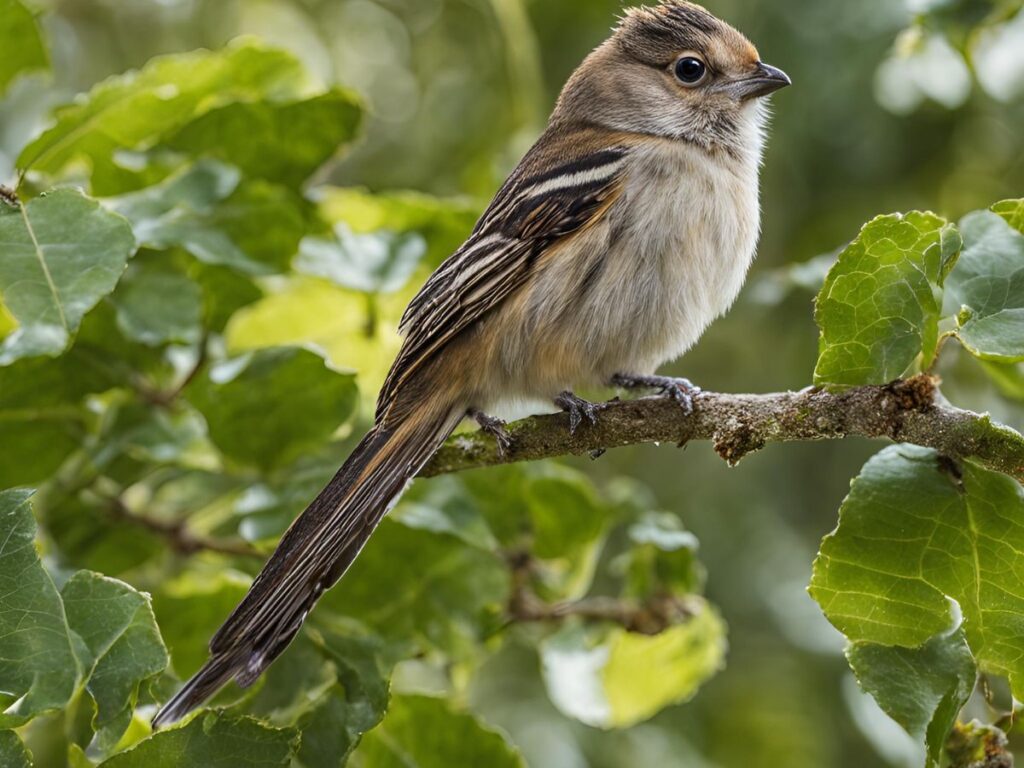
1. Height and Depth
One of the most crucial features to consider when choosing a fence is height and depth. The wall’s height is an important factor in keeping out birds and larger critters. For example, a wall for birds should typically be at least 6 to 8 feet tall to prevent them from flying over. Three to four feet of fence height is often sufficient for squirrels, rabbits, and raccoons. how to tell if an avocado is ripe
Equally important is the depth of the fence. If you’re dealing with burrowing animals like rabbits or moles, the fence should be buried at least 12 to 18 inches underground to prevent them from digging under and gaining access to your garden. This combination of height and depth ensures that pests are deterred from above and below the ground.
2. Material Durability
The durability of the fence material is another critical factor. A weather-resistant barrier that may physical damage from animals is essential for long-term success. Fences made of metal (such as wire mesh, hardware cloth, or chain-link) are highly durable and resistant to wear and tear. They are also less likely to be damaged by animals chewing or climbing.
If you opt for wooden fences, ensure the wood is treated for weather resistance and can handle moisture, heat, and frost exposure without rotting or warping. Plastic or vinyl fences may not be as durable in harsh conditions but are more resilient to weather-related damage than untreated wood. Choose materials based on the weather conditions in your region and the type of critters you are most concerned about.
3. Ease of Maintenance
Another important aspect to think about is the simplicity of maintenance. A fence that requires minimal upkeep will save you time, effort, and money in the long run. Think about how simple it will be to maintain the material (for example, vinyl is easier to clean than wood) and whether it requires regular repairs or treatment (such as painting or sealing for wooden fences).
Metal fences usually require little maintenance, aside from occasional rust prevention, while plastic fences can be cleaned with a simple rinse. Be sure to choose a material that suits your willingness and ability to maintain it, especially if you have a busy schedule or don’t want to spend too much time on upkeep.
4. Visibility and Aesthetics
Your fence should not only be functional but should also complement the look of your garden. Take into account the prominence and visual appeal of the fence material. If you want to maintain an open feel in your garden while still providing protection, opt for semi-transparent or transparent materials like wire mesh or vinyl with a light color. These materials allow sunlight to filter through and don’t obstruct the view, making your garden appear more spacious and inviting.
If privacy and seclusion are essential, a solid wood or plastic fence may be better suited for your needs. However, ensure the fence’s height and design still offer the necessary protection without overpowering your garden’s landscape.
5. Cost-effectiveness
Lastly, the cost-effectiveness of the fence should be considered. While investing in high-end materials for the best protection may be tempting, balancing your budget with the desired features is essential. High-quality metal or electric fences can be costly but offer long-term durability and effectiveness. On the other hand, plastic or vinyl fences tend to be more affordable upfront, but they may not last as long as their metal counterparts.
Consider how much you’re willing to invest in the fence and whether you’re looking for a more budget-friendly solution or are prepared to spend more for added durability and long-term effectiveness. Factor in the initial cost and any future maintenance or replacement costs as you decide.
How to Install Fences to Keep Out Critters, Caterpillars, and Birds
Installing a fence to protect your under the fence barrier from critters, caterpillars, and birds is a practical and effective solution. While the process can seem daunting, how to build a garden fence to keep animals out your garden will be secured quickly with the proper preparation, tools, and steps. Here’s a guide to help you install a fence that will provide reliable plant protection.
1. Preparing the Garden
Before you begin installing your fence, it’s essential to properly prepare the garden. This step ensures you have a clear and safe area to work with. Follow these steps:
- Clear the area: Remove any obstacles, such as plants, rocks, or debris, from where the fence will be installed. The installation procedure will run more smoothly and effectively as a result.
- Measure the perimeter: Use tape to determine the area you want to enclose. Mark the boundaries where your fence will go. This step helps you plan for the correct amount of fencing material and placement of the posts.
You can gather the tools once the area is clear and the perimeter is measured.
2. Tools and Equipment Needed
To install a garden fence, you’ll need several tools and materials. Here’s a list of the essential tools and equipment required for a successful installation:
- Hammer or Post Driver: For driving posts into the ground.
- Fence Posts: Typically made of wood or metal, depending on your chosen fence material.
- Stakes: To help mark the locations of the fence posts.
- Wire Cutters: These are used to trim the fencing material if necessary.
- Fencing Material: Options include wire mesh, chicken wire, or netting, depending on the pests you’re trying to deter.
- String Line or Chalk Line: Keep your fence line straight during installation.
- Level: To ensure the posts are installed vertically.
- Shovel or Post Hole Digger: If you need to dig holes for the posts.
Having these tools ready will make the installation process much smoother and more efficient.
3. Step-by-Step Installation Process
Now that you have everything you need, it’s time to start. Follow these simple steps for installing your garden fence:
Step 1: Setting Up Fence Posts
The first step in the installation process is setting up the fence posts. Here’s how to do it:
- Mark post locations: Use stakes and a string line to mark where your fence posts will go. Depending on the type of fence you’re installing and the material’s weight, posts should be placed about 3 to 6 feet apart.
- Dig holes for the posts: Use a post hole digger or shovel to dig holes where your fence posts will go. The holes should be deep enough to ensure stable posts; typically, 1/3 of the post length should be underground.
- Install the posts: Place them in the holes and ensure they are level. Use a post driver to securely drive the posts into the ground. If the posts feel loose, backfill the holes with soil or gravel to make them more secure.
Step 2: Attaching the Fencing Material
Once your posts are set, it’s time to attach the fencing material. Follow these steps:
- Unroll the fencing material: Lay it along the posts, ensuring it’s long enough to cover the entire perimeter. If you’re using wire mesh or chicken wire, ensure the material is the right height for your needs (3 to 4 feet for critters, 6-8 feet for birds).
- Attach the material to the posts: Start at one end and secure the fencing material using staples, nails, or wire ties. If using wire, be sure to stretch it tightly to avoid sagging.
- Ensure even spacing: As you attach the material, ensure the fencing is adequately aligned and taut. You may need to use a level to keep it straight along the length of the fence.
Step 3: Securing and Checking for Gaps or Vulnerabilities
The final step in the installation process is ensuring your fence is secure and free of gaps or vulnerabilities. Here’s how:
- Check for gaps: Walk along the entire perimeter and check for gaps between the fence and the ground. Critters, especially small animals like rabbits, can squeeze through even the tiniest spaces. If you find any gaps, consider submerging the fence’s base a few inches below the surface or adding extra material to seal it.
- Secure loose sections: Ensure that the fencing is tightly secured at each post and there are no loose sections. You don’t want any part of the fence that animals could push through or climb over.
- Inspect for weaknesses: Take a final look at the entire fence for any weaknesses, such as areas where animals could chew through (wooden posts) or spots too low to the ground. If necessary, reinforce these areas with extra material or stakes to prevent escape or intrusion.
Installing a fence to keep out critters, caterpillars, and birds is a simple but effective solution to protect your garden fence to keep animals out. By preparing the area properly, using the right tools, and following the step-by-step process, you can create a strong, secure barrier that ensures your plants stay safe. Take time with the installation, check for vulnerabilities, and enjoy peace of mind, knowing your garden is well protected from pests. how to store bare root strawberries
Additional Tips for Keeping Critters, Caterpillars, and Birds Out
While installing a strong fence is among the best methods for safeguarding your yard, several additional strategies can help deter pests like critters, caterpillars, and birds. These pointers can increase the efficacy of your fence and help create a pest-free environment for your plants.
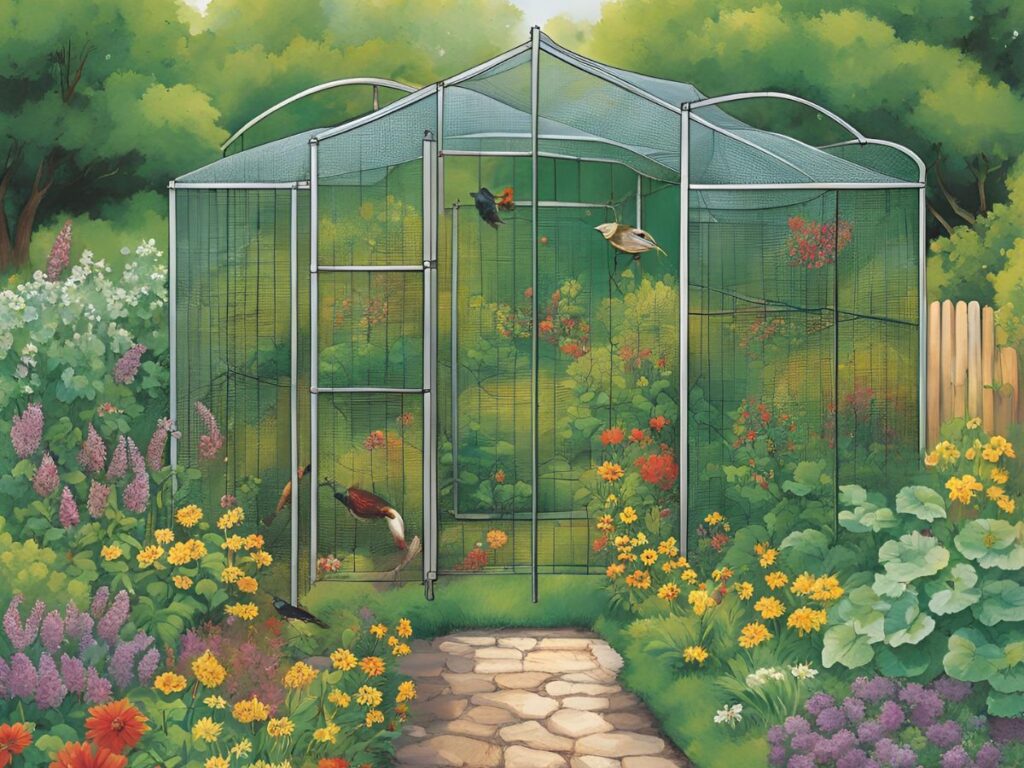
1. Regular Fence Maintenance
Even the best-built fences require regular maintenance to ensure they continue to perform effectively. Here’s how to keep your fence in top condition:
- Inspect for damage: Regularly check for holes, loose sections, or areas where the wall may have weakened due to weather conditions or animal activity. Small gaps, especially near the ground or corners, are critters’ favorite entry points.
- Tighten and repair: If you notice any fence parts coming loose or damaged, secure them as soon as possible to avoid creating an opening for pests. Repair any holes or rips in the material immediately, mainly if you’re using wire or netting.
- Check for digging or burrowing: Critters like rabbits and squirrels may dig beneath fences to gain access. Ensure the bottom of the wall is either buried a few inches underground or you’ve added a buried wire barrier to prevent burrowing.
2. Use Natural Deterrents
Incorporating natural deterrents into your critter proof garden design can make your space more inhospitable to pests. Fences for gardens that keep animals out Many plants naturally repel animals or insects, and adding them around your fence line can provide an extra layer of defense.
- Garlic: The pungent smell of garlic repels many insects and animals. Garlic plantings around the garden’s edge can help keep critters and caterpillars away.
- Marigolds: These vibrant flowers are renowned for their capacity to keep a variety of pests away, including aphids, rabbits, and deer. Marigolds are particularly effective in keeping caterpillars at bay, and their bright colors add beauty to your garden.
- Lavender and mint: These fragrant herbs smell lovely and are known to repel pests like mosquitoes, ants, and rodents. Growing them near your garden fence can keep critters from entering your garden.
Combining these natural deterrents with a sturdy fence will create an even more formidable barrier to garden pests.
3. Combine with Other Pest Control Methods
While fences are effective, they can be even more powerful when combined with other natural pest control strategies. Here are some additional methods to consider:
- Companion planting: This gardening technique involves planting certain crops or flowers next to each other to deter pests. For example, planting basil near tomatoes can help keep aphids and caterpillars away, while planting chives or cilantro can deter insects like aphids and flea beetles.
- Natural repellents: Several eco-friendly repellents are designed to keep pests at bay. For instance, neem oil is a natural insecticide that controls caterpillars and other insects well. Similarly, placing cedarwood chips or sprinkling cayenne pepper around your garden’s border can help keep critters like rabbits and squirrels at bay.
- Predator insects: Introducing beneficial insects like ladybugs or predatory beetles can help control caterpillar populations naturally, reducing the need for chemical pesticides.
By combining fences with these additional methods, you can keep critters, caterpillars, and birds out and maintain a healthy, natural ecosystem in your garden.
4. Proper Fence Height
Your fence’s height is essential in its effectiveness, especially when keeping out flying pests like birds.
- Birds: For larger bird species, such as pigeons, crows, and sparrows, a fence height of 6-8 feet is ideal. This height prevents them from effortlessly flying over and accessing your small fenced in garden. A lower fence may suffice for smaller birds, but it’s still essential should make sure your fence is sufficiently high to keep them from hopping over or squeezing through openings.
- Flying Insects: Besides height, some fences, like mesh or netting, can be designed with smaller holes that prevent insects from getting through. This is particularly useful for keeping caterpillars and other insects from entering your garden while allowing air and sunlight to circulate.
If birds are a frequent problem in your garden, consider adding deterrents such as bird spikes, scare tapes, or reflective objects (like aluminum foil strips) along the top of your fence to discourage them from landing.
Conclusion
In conclusion, selecting the right fence to keep out critters, caterpillars, and birds is essential for maintaining a healthy, thriving garden. With the right wall, you can protect your plants and crops from pests that can damage growth and aesthetics. Whether you choose a metal fence to keep out burrowing animals, a fine mesh netting to deter insects, or a taller barrier to block birds, each choice has unique benefits based on your garden’s specific needs.
Investing in a quality fence is not just about immediate protection—it’s a long-term solution that will save you time, effort, and resources. A sturdy wall reduces the need for constant pest control methods, chemicals, and plant replacements. By securing your garden now, you ensure it will flourish yearly.
We encourage you to explore the various fence options available and consider factors like material, height, and placement to select the best choice for your garden. Start your garden protection project today, and enjoy the peace of mind of knowing that your plants are safe from unwanted pests.
FAQs
1. Why do I need a fence to protect my garden from critters, caterpillars, and birds?
A fence protects your plants and crops from pests like rabbits, squirrels, caterpillars, and birds that can damage or feed on your garden. A well-chosen fence prevents these animals from entering and causing harm, allowing your plants to grow undisturbed.
2. What type of fence is best for keeping out rabbits and other small animals?
Wire mesh, chicken wire, or hardware cloth fences are excellent for keeping out smaller animals like rabbits and squirrels. These materials have small openings that prevent animals from squeezing through. A fence height of 3 to 4 feet is typically sufficient for small critters.
3. How tall should my fence be to keep out birds?
For bird deterrence, a fence should be at least 6-8 feet tall to keep out larger bird species. A lower fence may suffice for smaller birds, but it’s essential to ensure the wall is tall enough to prevent them from hopping over or squeezing through openings.
4. Can I use electric fencing to keep out larger animals like deer?
Electric fencing is a viable choice for keeping out larger animals like deer and raccoons. However, it can be more expensive than traditional fencing and requires regular maintenance to ensure it functions correctly.

